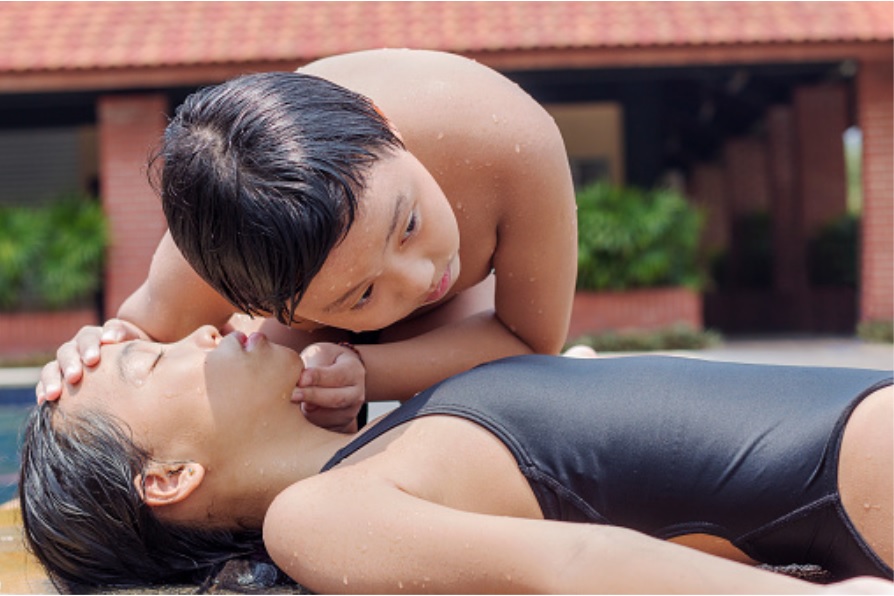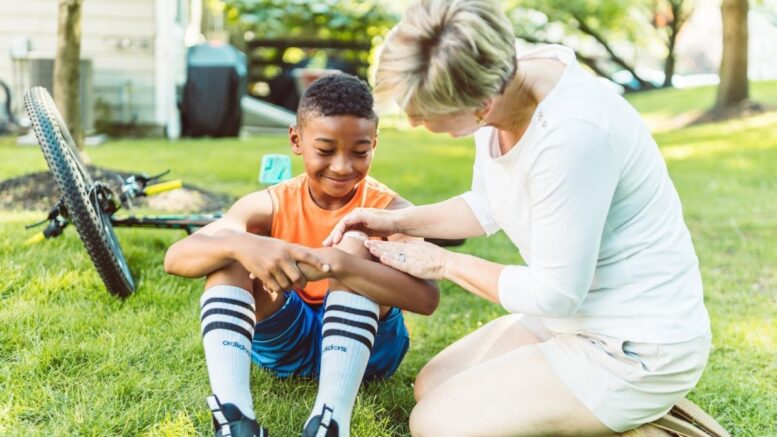First aid is useful in a variety of circumstances. Accidents occur frequently, and being prepared for them might be fatal. Managing first aid to children is especially important because accidents involving children occur more frequently.
Although no parent wants their kid to become ill or harmed, keeping your kid safe at all times is hard. Every child may experience accidents and injuries, some of which may even be life-threatening. Because of this, it is the responsibility of the parents to be ready, which includes having a fundamental knowledge of pediatric first aid.
You might already know how to clean common wounds and scrapes, and how to apply a Band-Aid. Here are a few more first aid guidelines you should be aware of.
When to Dial 911
Even though all emergencies don’t need a hospital visit or a contact to 911, parents must understand when to place that call. It’s time to dial 911 if a kid has lost consciousness for any length of time, isn’t breathing, is having a seizure, or has bleeding that is not stopping. The moral here is: If in doubt, call simply to remain safe.
Things to Keep in Your First-Aid Kit
Maintain two first aid kits: one larger one at home and one smaller one in the car. Restock the kit each year, and make sure none of the pills are past their expiration dates.
The essentials for a parent’s first-aid kit are adhesive bandages in various sizes, antibiotic ointment, absorbent compress dressings, antiseptic wipes, ibuprofen, aspirin, acetaminophen (children’s), emergency blanket, cloth tape, cold compress, sterile gauze, hydrocortisone ointment, tweezers, etc. You can learn from a First Aid Course how to use these materials and ensure your child is in less pain.
Furthermore, at home medical supplies can help you be prepared and promptly address minor injuries and illnesses at home, providing immediate care and comfort to your child while seeking appropriate medical attention when necessary. Remember, preparedness can make all the difference in dealing with unexpected medical situations.
Reducing the Fever
Complications from fevers can include dehydration or convulsions. When you see your doctor regularly, ask about the recommended dosage of over-the-counter drugs like children’s acetaminophen and ibuprofen. Acetaminophen and Ibuprofen can both be used to treat stubborn fevers because they are two different medications.
Using herbal medicine can be a good idea to reduce your kid’s fever in case he has any kind of drug allergy. But make sure to contact the doctor beforehand. For exceptionally high fevers, an ice bath may be essential in addition to cool compresses.
Knocking out a Tooth
It’s exciting to see your youngster lose their first tooth, and most do it on their own. Sometimes baby teeth require help. When baby teeth crowd adult teeth or are highly decaying or broken, it might be necessary to remove them.

But, in case your kid gets knocked out of his tooth which was not a baby tooth, Dr. Justin Bonner, an oral surgeon, emphasizes the importance of receiving aid as soon as possible. “It is best to keep in mind a few facts, like the fact that a tooth has a better chance of surviving if it is replaced quickly. If you are apprehensive about putting the tooth back in the socket, place it in milk. Then, make a prompt appointment with the dentist. They will likely fix the tooth with a splint and monitor its natural healing.”
Treating Nosebleeds
Children frequently get nosebleeds, which typically appear more frightening than they are. If your child suddenly starts bleeding from the nose but otherwise seems to be in good health, gently push the nasal area by pressing both noses together with your thumb and index finger. Keep your child from blowing their nose.
In case the bleeding does not seem to stop after 5 to 10 minutes or is excessive, call your physician or go to the emergency unit.
Treating a Burn
Our grandparents often had interesting cures for different burns. You might hear advice such as butter if a kid touched the stove or vinegar for sunburn. Keep in mind that your kid is not being baked and that these therapies will simply make the burn worse by increasing the risk of infection.
Rinse the burns until the sharp pain disappears with cool, clean water. Dress the skin using an antibacterial cream and a loose bandage so that no infection happens through the spot.
Helping with a Scrape or Cut
Small scrapes and cuts are simple to treat at home. If you see bleeding, you can stop it by gently applying pressure to the specific spot. After that, clean your hands and also the wound if necessary, apply an antibiotic cream, and then bandage the wound. Call your doctor or 911 if the bleeding is severe or doesn’t stop after applying pressure for roughly five minutes.
Treating Stings and Bites
You need to keep an eye out for allergic reactions such as tongue swelling, hives, or breathing difficulties after any bites or stings. To remove the stinger, rub something flat against the skin, such as a credit card; using tweezers or your fingernails could force more venom into the wound. Distract the kid from the situation with ice cream while applying ice to the area of pain.
Assessing Head Injuries
Children’s heads appear to be attracted to the edges of coffee tables. First, ensure that your youngster is conscious and alert. Ask them basic things such as their name, the name of their pet, and their birthdate. Seek emergency medical assistance if the patient has lost consciousness.
Meanwhile, clean the area or put ice on the head bump. If your kid develops a headache, becomes nauseous, vomits, or appears bewildered, take her to the clinic to review the concussion procedure.
Handling Seizures
Move your child away from any furniture or things that could hurt them if they are having convulsions or seizures. Turn kids on their side after making sure they don’t have anything in their mouths. If your kid is having breathing problems, perform CPR. If your child has a seizure for the first time or if it lasts more than five or six minutes, make sure to dial 911.
Choking on Anything
You might need to step in if your kid has something stuck in their throat or choked on but is still conscious, able to speak, and able to cough. Coughing helps your child remove the object from their airway and is a good indication. You shouldn’t try to take the item out of their mouth by reaching in there. Your kid can sense your nervousness, so try to maintain your composure.
If you are familiar with CPR, you should use it if your child is not breathing or your kid is not moving the chest up and down, not coughing, unable to speak, or starting to turn blue. Call 911 immediately if you don’t know CPR.
Dealing with Drowning
Swimming can be enjoyable, but it is crucial to keep a sharp eye out for drowning. Once you’ve pulled your kid from the water, make sure they are breathing and awake. If your child is not breathing, perform CPR, if the child seems even somewhat unresponsive, dial 911. However, be sure to be aware of the symptoms of “dry drowning,” or subsequent drowning, to deal with it as soon as possible.

Dealing with a Fracture or Sprain
Wrap the affected region gently in a towel or piece of clothing if you suspect your child has suffered a sprain or fracture. Avoid attempting to create your own splint or brace or straighten it up. It should be treated medically and given cold compresses.
In children, sprains and fractures frequently occur. It might be challenging to tell the difference between a sprain and a bone fracture, so it’s crucial to see your physician for an X-ray. Your doctor might also provide you with a treatment plan and treat the sprain or fracture by placing it in a sling, cast, or brace.
Children Losing Consciousness
It can be incredibly frightening to witness a child fainting. To ensure your child is breathing, you should check their airway and pulse first. If they are not breathing, contact 911 or start CPR if you know how. When this happens, turn the child to their side to prevent choking. Children who faint occasionally vomit. Additionally, elevate their feet 12 inches above their heart level.
Final Words
Before encountering any kind of emergency with your kid, educating yourself is incredibly helpful. Additionally, it’s critical to adopt a preventative strategy. That entails childproofing the home and constantly keeping an eye on your kids.
Even the most knowledgeable and cautious parents occasionally face situations for which they are not prepared. In these situations, parental intuition is a powerful force. Trust your instincts when it comes to defending your child. And if in doubt, make sure to go visit a doctor.
